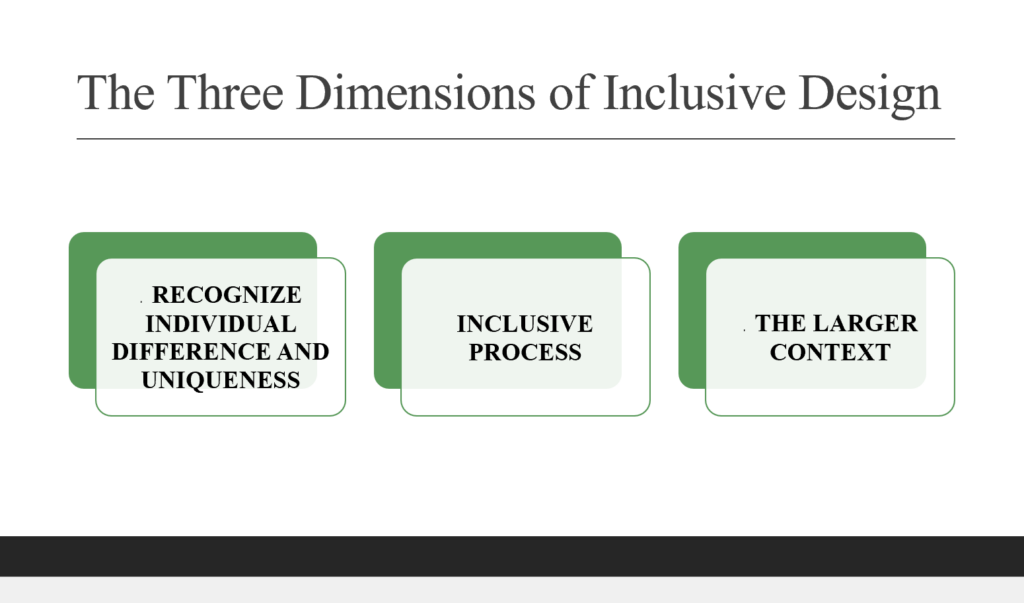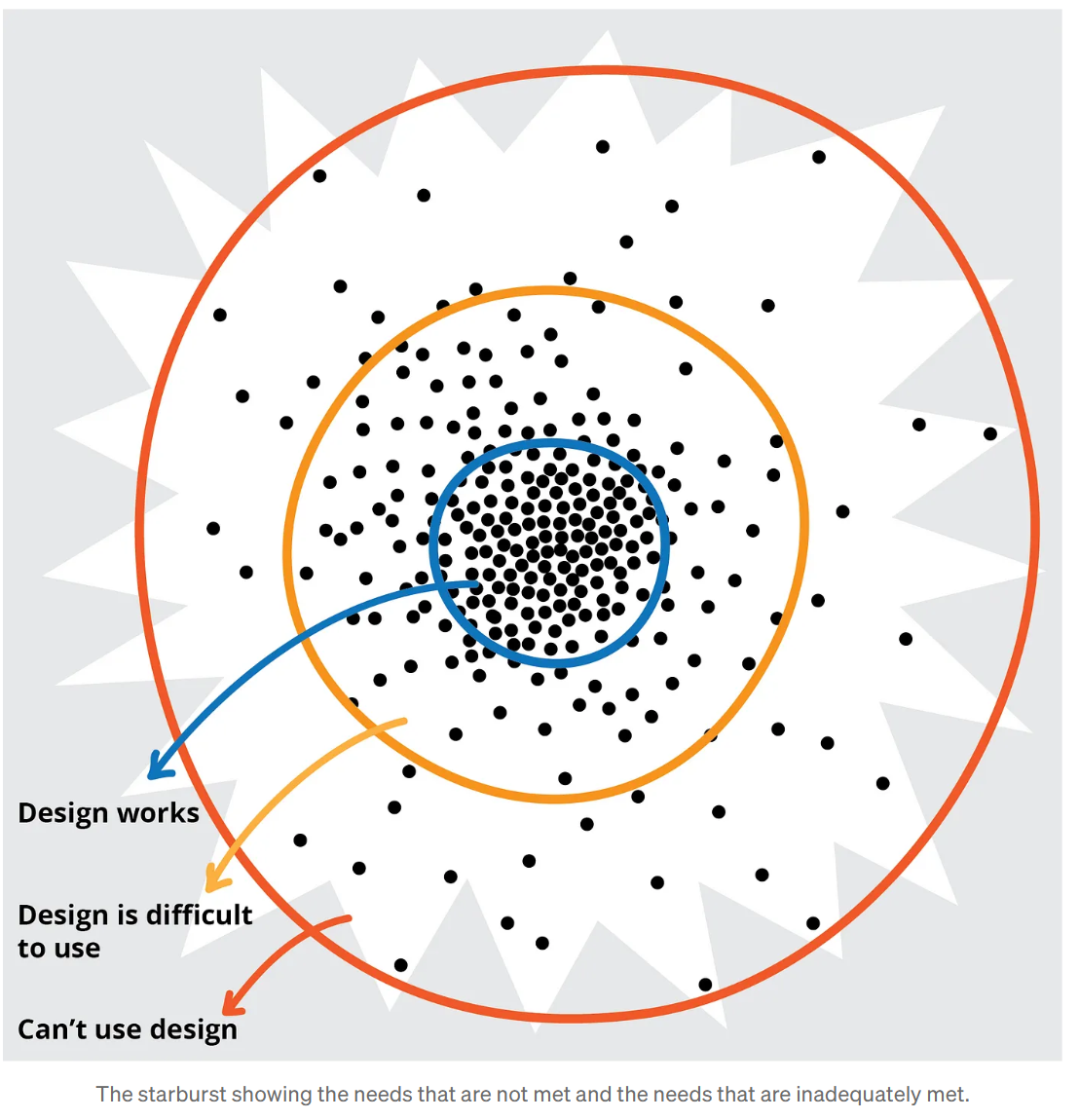Inclusive Design for Learning
Inclusive Design for Learning is an approach developed by the Inclusive Design Research Center at OCAD University through more than 25 years of applied research. The theory embraces the diversity of human experiences, fostering an environment where a global community of lifelong learners can thrive together. This method enhances learning for all students, not just individuals with disabilities or learning differences. Much like the universal design for learning (UDL) model, all factors or characteristics of the marginalized group are considered. But rather than providing a ‘one-size-fits-all’ approach like UDL, the Inclusive Design for Learning Framework offers individual or multiple entry points for each learner. This theory considers diversity with respect to ability, language, culture, gender, age, and other forms of human difference. It sees the learner as multifaceted and presents a design approach that can adapt to meet individual needs.

Inclusive design for learning includes three dimensions that one works within when practicing inclusive design: the recognition of individual difference and uniqueness, the inclusive process of design, and the larger context. The first dimension, recognizing individual difference and uniqueness, allows individuals to acknowledges and value their uniqueness. Learners have the power to make their own choices and reflect upon their learning to guide designs going forward. The second dimension, an inclusive process of learning design, fully involves the learner in co-creating and shaping their learning. This learning process should consider different points of view, recognize that mistakes are valuable, support teamwork, and encourage students to take risks along their learning path. Finally, the third dimension tells us that inclusive design practices should strive to recognize the larger context, to create cultural change by considering the global and long-term impact. The design and learning process should consider its wider effects, aiming to create positive changes and avoid harming connected systems. Learners should understand their growing role and influence in the changing global community.
Jutta Treviranus, director of the Inclusive Design Research Center, uses the starburst image in her work – Inclusive Design: The Bell Curve, The Starburst, and the Virtuous Tornado to illustrate that more diversity exists at the edge where needs are inadequately met.

She says that, “Because the dominant trend is to design for the average, typical or mass, this difference causes a mismatch between the needs of the individual that is different, and the design of the environment, product or service: which results in the experience of disability”. She also notes that anyone can find themselves at the edge and experiencing a mismatch (2019).
People who’s needs are ignored or inadequately met offer the greatest motivation for change. Including such underserved groups as valuable members of a design team can offer the greatest innovation, creativity and insight to redesign systems. These users offer the greatest insight and are unlikely to defend a design that does not support their needs. Therefore, the people at the edge offer the most innovative ideas to stretch, expand and improve current designs.
The three dimensions can be applied through the use of a “virtuous tornado” approach, where an adaptable system that stretches to encompass more and more of the missed needs is co-created, by continuously asking who are we missing? The imperfect, impermanent and incomplete are appreciated, and mistakes and failures yield the greatest learning. Designs become more resilient, more inclusive, move innovative, more adaptable and more accessible. Rather than taking a linear approach to design processes, this cyclical model is more responsive to changes and allows for varied perspectives, which leads to more dynamic, functional and optimal outcomes for the users involved.

References
Treviranus, Jutta (2018) Realizing the potential of inclusive education. In: UNIversal Inclusion. Rights and Opportunities for Students with Disabilities in the Academic Context. Franco Angeli. (In Press) Available at http://openresearch.ocadu.ca/id/eprint/2193/
Treviranus, J. (2019, May 12). Inclusive design: The bell curve, the starburst and the virtuous tornado. Medium. https://medium.com/@jutta.trevira/inclusive-design-the-bell-curve-the-starburst-and-the-virtuous-tornado-6094f797b1bf
Treviranus, J. (2022, September 18). Recount 15: Seeking True Innovation. Medium. https://medium.com/@jutta.trevira/recount-15-seeking-true-innovation-caada6df45c4
Watkins, C., Treviranus, J., & Roberts, V. (2020). Inclusive Design for Learning: Creating Flexible and Adaptable Content with Learners. Commonwealth of Learning (COL). http://hdl.handle.net/11599/3690